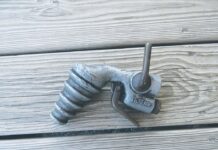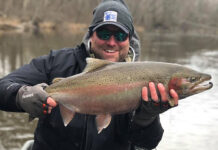The U.S. Fish and Wildlife Service (FWS) recently announced plans to reintroduce a non-migratory flock of endangered whooping cranes in Louisiana. If this proposal is approved, the reintroduction could begin in early 2011.
There are approximately 1.3 million acres of suitable marsh habitat in southwestern coastal Louisiana. The cranes are not expected to be affected by the Deepwater Horizon oil spill.
Reintroduction
Whooping cranes occurred historically in Louisiana in both a residential, non-migratory flock and a migratory flock that wintered in Louisiana. The proposed release area is the location where whooping cranes have been documented raising young in Louisiana.
“With just under 400 birds in the wild, the vast majority of which winter along the Texas coast, whooping cranes are among our nation’s most threatened species.” said Ken Salazar, Secretary of the Interior.
The reintroduction is proposed as part of an ongoing recovery effort for this endangered species, which was on the verge of extinction in the 1940s and even today has only about 395 individuals in the wild (none in Louisiana).
The only self-sustaining wild population of whooping cranes migrates between Wood Buffalo National Park in the Northwest Territories of Canada and Arkansas National Wildlife Refuge in Texas and remains vulnerable to extinction from continued loss of habitat and unpredictable severe weather during migration.
The FWS proposes the new, reintroduced, non-migratory population of whooping cranes be designated as a “non-essential, experimental population” (NEP) under the provisions of the Endangered Species Act.
This designation allows compatible routine human activities in the reintroduction area and permits taking whooping cranes when such take is accidental and incidental to an otherwise lawful activity, such as agriculture, recreation, and hunting. The intentional killing of any NEP-designated whooping crane would still be a violation of federal law punishable under the Endangered Species Act and the Migratory Bird Treaty Act.
In 2000, the FWS established a similar experimental population that migrated between Wisconsin and Florida. Researchers used ultra-light aircraft to teach the cranes to fly from their central Wisconsin nesting grounds to their winter home in Florida. This summer that population numbered 97 cranes, including nine pairs that attempted to nest.
* * *
Nectar feeder alert:
The most common question I get in late summer is, when should I take my hummingbird feeders down? Contrary to conventional wisdom, do NOT take nectar feeders down now. Feeders do not disrupt the migration of hummingbirds. Shorter days tell them when to move.
Keep nectar feeders up until you do not see any hummingbirds for about two weeks. That will be as late as mid-October.
Hummingbird migration is now under way; the birds you see in September are almost certainly not the same individuals you saw all summer long. They are migrants passing through from farther north. Some may only stay an hour or two. Others may spend the night.
Any hummingbirds seen after mid October are probably not ruby-throats. They are western species, most likely rufous hummingbirds.
In recent years the Hummer/Bird Study Group (www.hummingbirdsplus.org) has documented 14 species of western hummingbirds wandering east during the fall and winter. In addition to rufous hummers, the list includes Allen’s, Anna’s, calliope, and white-eared hummingbirds.
To have a chance to see a western species, and it’s a remote chance at best, keep one feeder filled until Christmas. Take it in at night so the nectar doesn’t freeze and crack the feeder.
Tracking these wandering western hummingbirds is too random and difficult for a formal study, so most of our knowledge comes from birders who keep feeders up into December and banders willing to travel on a moment’s notice to trap and band these birds.
Earlier this summer, for example, a banded rufous hummingbird was captured in Alaska. It had been banded last winter in Florida and had traveled more than 3,500 miles.
* * *
Motorists beware!
White-tailed deer are about to enter the rut. Preoccupied with thoughts of the opposite sex, deer often carelessly cross roads between dusk and dawn. Sometimes groups of deer cross roads single file. So slow down, and be alert from now until Christmas.
Pennsylvania Game Commission Executive Director Carl G. Roe warns, “The personal tragedies and property losses caused by deer-vehicle collisions are unfortunate and often painful consequences of living with white-tailed deer.”













Scott, Thanks so much for the info about Hummers. I haven’t seen any for about a week, and just today, I was thinking of taking the feeder down for the season. Now, I’ll leave it up, and try the December idea too.
Barb